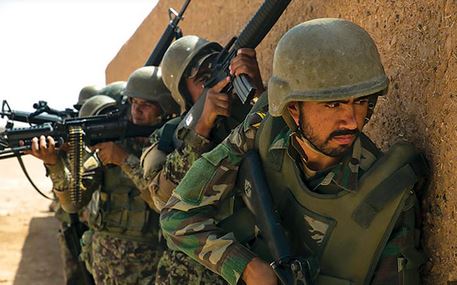The Afghanistan military has been a central figure in the country’s history, especially during the last few decades of conflict and change. Understanding its structure, history, and current state is essential for anyone interested in global military affairs or Afghanistan’s place in the world.
Historical Background
Afghanistan’s military roots trace back to ancient times when tribal warriors defended their lands from invaders. However, the modern Afghan military began taking shape in the 18th century under Ahmad Shah Durrani, the founder of modern Afghanistan. Over the years, the military has evolved, influenced by various foreign powers, from the British in the 19th century to the Soviets in the 20th century.
The Soviet-Afghan War (1979-1989)
The Soviet invasion in 1979 significantly impacted the Afghan military. The Soviet Union attempted to build a strong Afghan army to support its puppet government. However, the Mujahideen, supported by the United States and other nations, resisted fiercely. The Afghan military, trained and equipped by the Soviets, was often caught in a brutal civil war. This period weakened the military’s structure, leading to a fragmented and war-torn force.

The Taliban Era (1996-2001)
When the Taliban took control in 1996, the military landscape in Afghanistan changed dramatically. The Taliban, with their strict interpretation of Islamic law, dismantled much of the existing military structure. Their forces were more of a militia than a traditional army, relying on guerrilla tactics and strict discipline. The Afghan military, as recognized internationally, was practically non-existent during this period.
Post-2001: The U.S. Involvement and Reconstruction
After the U.S. invasion in 2001, following the 9/11 attacks, the Afghanistan military saw a significant transformation. The U.S. and NATO allies invested billions of dollars in rebuilding the Afghan National Army (ANA) and other security forces. The aim was to create a capable force that could defend Afghanistan against the Taliban and other insurgent groups.
Training programs, modern equipment, and extensive support helped the ANA grow rapidly. By the mid-2010s, the Afghan military had around 350,000 personnel, including the army, air force, and police. However, challenges such as corruption, lack of motivation, and the complex tribal dynamics of Afghanistan often undermined the effectiveness of these forces.
The Fall of Kabul and the Taliban’s Return (2021)
In August 2021, the world witnessed the rapid collapse of the Afghan government and military as the Taliban advanced across the country. Despite years of training and equipment from the West, the Afghan military crumbled in the face of the Taliban’s offensive. The reasons for this collapse are complex, involving low morale, leadership failures, and a lack of faith in the central government.
The fall of Kabul marked the end of the U.S.-led mission in Afghanistan and the re-establishment of Taliban control. The remnants of the Afghan military either surrendered, fled the country, or joined the Taliban forces.
Current State of the Afghanistan Military
Under Taliban rule, Afghanistan’s military is no longer a national force in the traditional sense. The Taliban have incorporated former Afghan soldiers into their ranks, but the structure is more of a militia governed by Taliban leadership. The focus has shifted from conventional military operations to maintaining internal security and enforcing the Taliban’s interpretation of Islamic law.
The Afghan Air Force, once a key component of the military, has been severely diminished. Many aircraft were either destroyed, captured by the Taliban, or flown out of the country by retreating Afghan pilots. The Taliban have little experience in maintaining or operating advanced military equipment, which presents a significant challenge.
Challenges and Future Prospects
The future of Afghanistan’s military under Taliban rule remains uncertain. The country faces numerous challenges, including economic hardship, international isolation, and internal divisions. The military, as it currently stands, is more of a force for enforcing Taliban rule rather than defending the nation against external threats.
However, Afghanistan’s history shows that the military’s role could evolve again, depending on internal and external pressures. Regional powers like Pakistan, Iran, and China may play a role in shaping the future of Afghanistan’s military, either by supporting the Taliban or encouraging the formation of a more traditional national force.
The Afghanistan military has undergone significant transformations, reflecting the country’s turbulent history. From tribal warriors to a modern army supported by superpowers, and now to a militia under Taliban rule, the military’s journey mirrors the broader struggles of Afghanistan. As the country faces an uncertain future, the role of its military will remain a critical factor in determining Afghanistan’s stability and place in the world.
